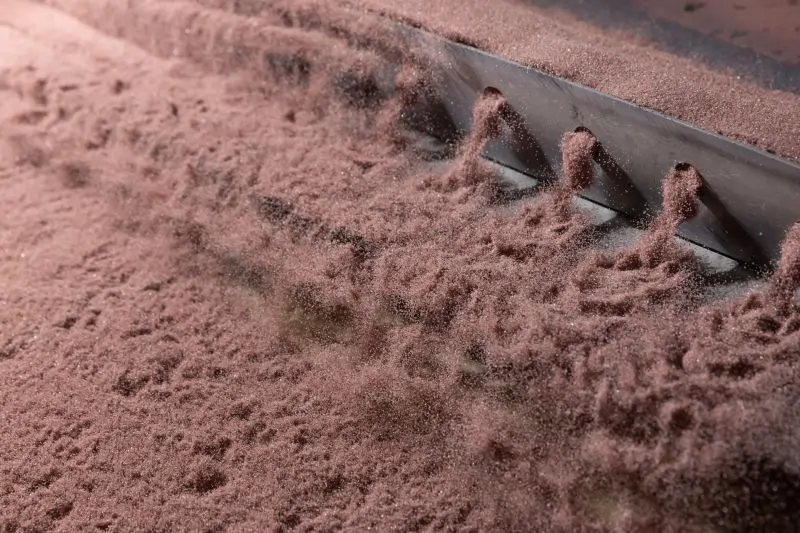Garnet, with its distinctive red hue and natural hardness, has emerged as one of the most versatile abrasive materials available. Although often associated with gemstones and jewelry, garnet's abrasive properties make it an indispensable tool in industrial applications. In this article, we explore the unique characteristics that make garnet a favored choice for abrasive applications and the specific advantages it offers over other materials.
1. Exceptional Hardness and Durability
Garnet boasts a Mohs hardness rating between 7 and 8, placing it among the more robust natural minerals. This exceptional hardness allows garnet to withstand high-pressure applications without breaking down or wearing out prematurely. As an abrasive, it provides the necessary resilience to cut through tough materials, from metal to glass, with precision.
- Mohs Hardness: 7-8, enabling garnet to remain effective under intense conditions.
- Durability: High resistance to fracturing, making it ideal for repeated use.
2. Angular Shape for Efficient Cutting
Unlike some abrasives, garnet grains are angular in shape, which enhances their cutting ability. This angular structure creates sharper edges, allowing for a more aggressive cutting action. As a result, garnet effectively removes material from surfaces, achieving faster and more efficient results compared to rounder abrasives.
- Angular Grains: Improve the cutting efficiency by creating sharper edges.
- Increased Cutting Speed: Allows for quicker material removal, enhancing productivity.
3. Eco-Friendly and Non-Toxic
One of garnet's most significant advantages is its non-toxic and environmentally friendly nature. Unlike silica sand, which poses health risks due to silica dust, garnet does not produce harmful dust particles. This makes it safer for workers and minimizes environmental impact, aligning with sustainable practices in industrial operations.
- Non-Toxic: Garnet does not release hazardous dust, making it a safer option for abrasive blasting.
- Environmentally Friendly: Often recyclable, reducing waste and supporting sustainable practices.
4. Versatility Across Applications
Garnet's versatility makes it suitable for a broad spectrum of abrasive applications. It is commonly used in waterjet cutting, where its sharp grains allow for precise cutting of various materials, including metals, glass, and ceramics. Additionally, garnet is popular in abrasive blasting for cleaning and preparing surfaces, as well as in sandpaper for smooth finishing.
- Waterjet Cutting: Provides precision cutting without thermal distortion.
- Abrasive Blasting: Effective for surface preparation and cleaning in construction and maintenance.
- Sandpaper: Commonly used in sandpaper for polishing and finishing tasks.
5. Cost-Effectiveness and Recyclability
Garnet is not only cost-effective but also highly recyclable, making it a smart choice for industries aiming to optimize their budgets. Garnet can be recycled multiple times before losing its abrasive quality, thus extending its utility and reducing overall costs. This recyclability factor contributes to its appeal as a sustainable abrasive solution.
The ability to reuse garnet helps industries minimize expenditure on abrasive materials, while also lowering environmental impact. Consequently, garnet is highly valued for both its economic and ecological advantages.
Conclusion
With its hardness, cutting efficiency, eco-friendliness, and cost-effectiveness, garnet stands out as a superior abrasive choice across various industries. Its versatility and recyclability further enhance its appeal, making it not only an efficient but also a sustainable solution for modern abrasive needs. As industries continue to prioritize safety and sustainability, garnet remains a trusted, high-performance abrasive that meets both current and future demands.
